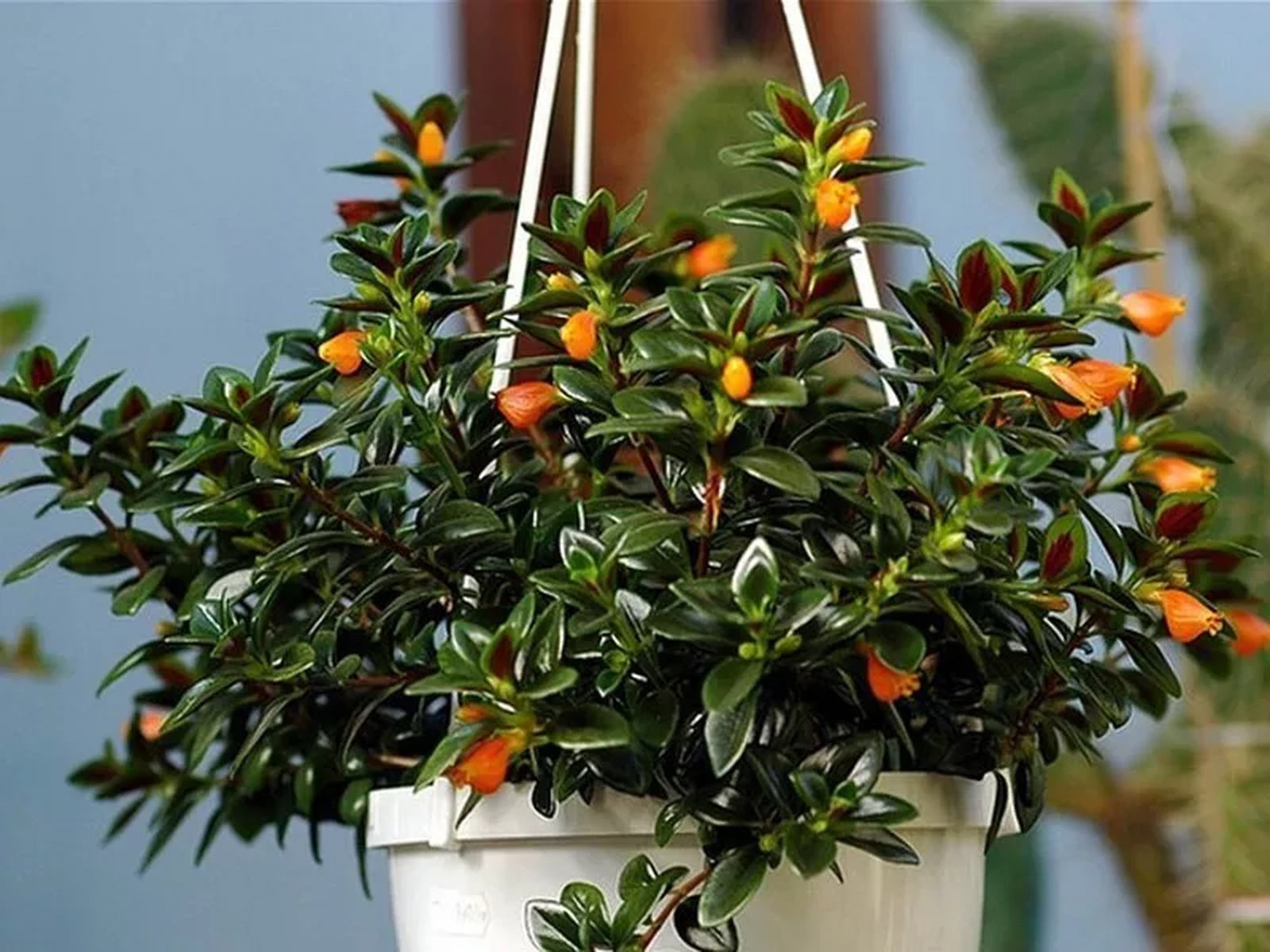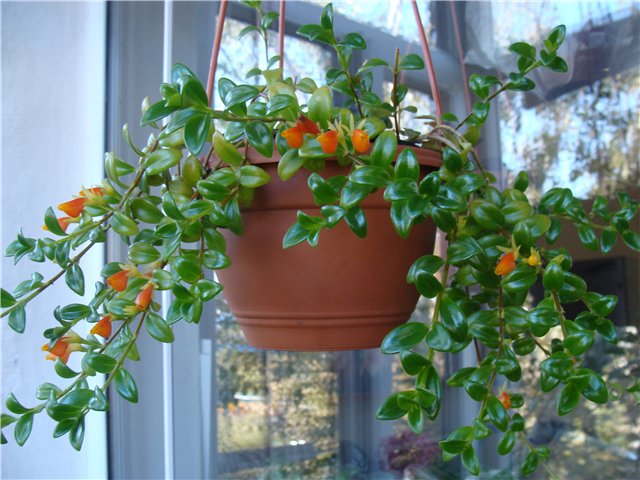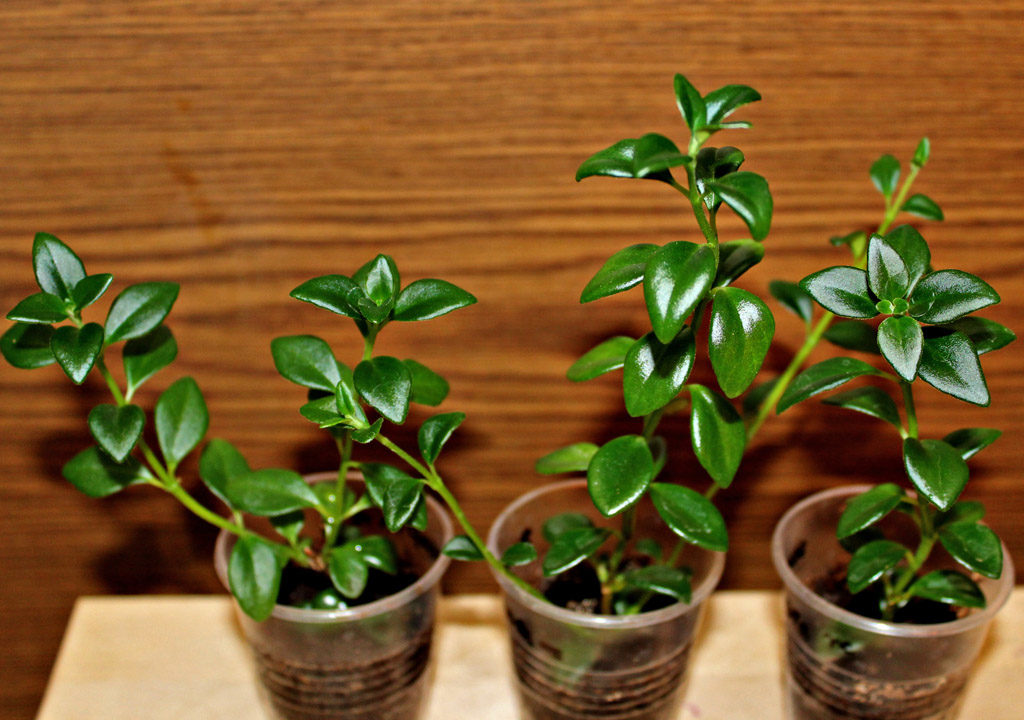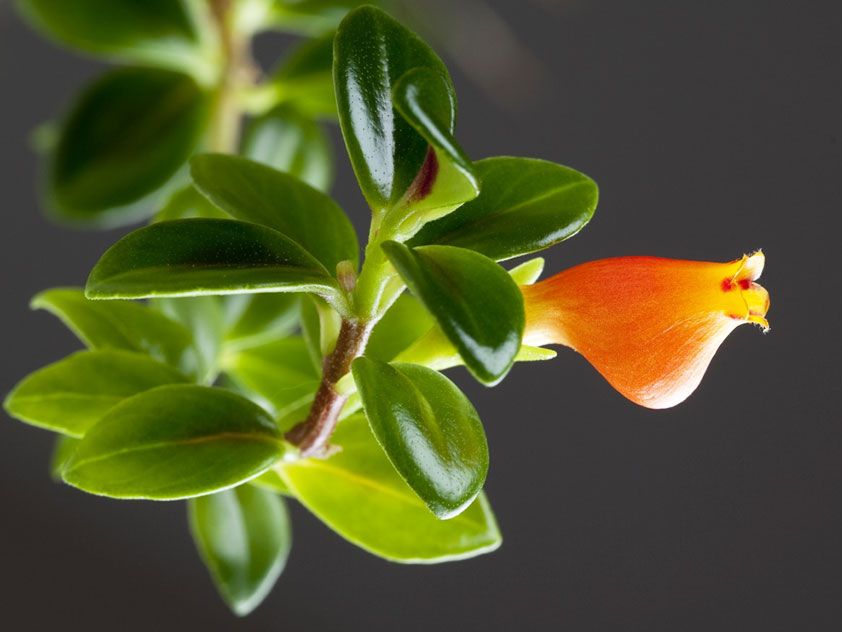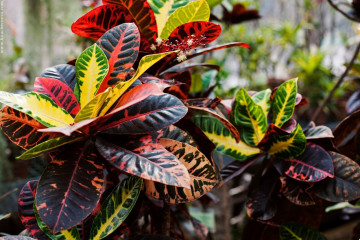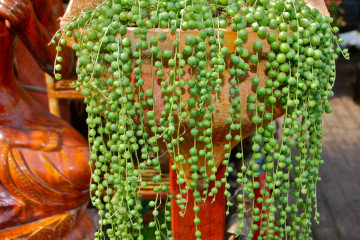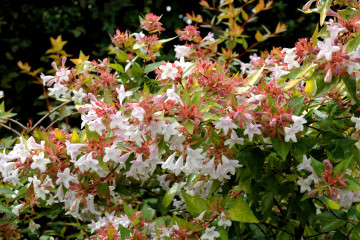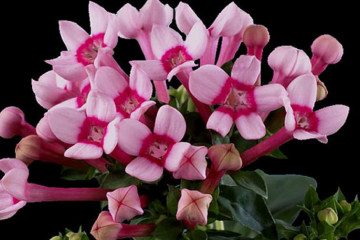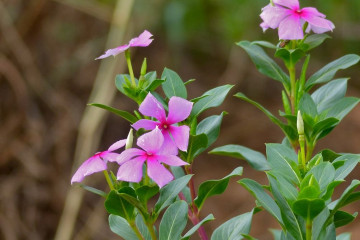Hypocyrta glabra: breeding methods and home care
Content:
This attractive flower came to Russia from the tropical rainforests of Brazil. At home, it is found as a shrub, subshrub, herbaceous plant, and even in the form of an epiphytic plant that lives on another plant, but does not feed on it. It grows in nature up to 70 cm in height, in indoor conditions it is a compact bush no higher than 25 cm with erect or slightly drooping stems.
Glabra hypocyrta, or naked, belongs to the Gesneriaceae family. The name "Hypocyrtos" comes from the Greek words: "hypo" - "bottom" and "cyrcos" - "curved", which is explained by the shape of the flower. It looks like a double one: from the first with open petals, the second grows - tubular with fused petals.
The plant looks very decorative in the interior of the office, decorates the balcony in the summer, creates an atmosphere of comfort in a city apartment and a private house.
Short description
A guest from Latin America who conquered lovers of flowering indoor plants is the glabra hypocyrt flower. Attention is drawn to its dark green, as if covered with wax, shiny dense oval leaves, on the underside of which streaks of lilac tones are barely noticeable. And the original form of a bright orange flower in the form of elongated sponges is striking in similarity with a goldfish. Flowers, the aroma of which is barely audible, are located on short pedicels in the axils of the leaves with inflorescences up to 3 pieces. In place of withering flowers, small bolls are formed, in which small seeds ripen.
The plant has a highly branched thin root system spreading shallowly from the surface of the earth.
There are erect and ampelous varieties of the flower.
Home care
A hypocyrt plant, home care for which will not be burdensome and time-consuming, is not too demanding.
Like any flower, it needs attention and care.
Caring for it includes:
- Properly chosen habitat for the season;
- Sufficient watering;
- Complete top dressing;
- Frequent spring transplant;
- Compliance with the conditions of the rest period;
- Timely pruning of the stems.
After flowering is over, it's easy to take care of. The stems are trimmed, removing half of them, which stimulates the emergence of new shoots and an increase in the number of flowers - the formation of buds occurs only on the stems of the first year of life.
A properly organized rest period is the key to abundant flowering.
Sometimes the glabra hypocyrt is attacked by pests:
- Whitefly;
- Spider mites;
- Scabbard.
They are fought with insecticides: Karbofos, Acaricide.
The appearance of white bloom on the leaves signals a plant infection with powdery mildew. The recovery of hypocyrtes is the removal of infected areas, the termination of irrigation and treatment with a fungicide.
Illumination
Bright, but diffused light is the main requirement for the illumination of the flower. Direct sunlight will harm it, placing it in the shade will prevent blooming. Sills of windows oriented to the southeast and southwest will be suitable for it. For ampelous varieties, indoor walls are suitable, where enough light enters.
In summer, glabra hypocyrt will feel great in the shade in the fresh air.In winter, it is installed at home in a well-lit place. It is at the beginning of winter, when there is a very short daylight hours, that flower buds are laid. The flower needs 12-14 hours of daylight hours, so it is extended using artificial supplementary lighting.
Watering
Hypocyrta, which care includes watering, requires its abundance from spring and summer heat. When autumn comes, it is gradually cut back. In winter (the dormant period of the plant), slight and careful watering is continued so that the earthen coma does not completely dry out.
For irrigation, use only soft, settled water at room temperature.
Excess moisture in the soil or stagnant liquid will lead to the appearance of brown or gray spots on the leaves, which indicates the occurrence of fungal diseases. Treating the problem with fungicides, removing the affected parts and placing the plant in a drier and brighter place will solve the problem. The flower will respond to excessive watering by dropping leaves. Dropping the buds also speaks of over-watering.
Using too cold water and irregular watering will result in brown spots on the leaves.
Humidity
Humid rainforests are the birthplace of glabra hypocyrtes, so houses create conditions close to natural (with high humidity). This is achieved by placing nearby fountains, pallets with wet expanded clay, moss or containers of water. A flower can serve as a decoration for a kitchen; a bright bathroom, where all the necessary components are present: humidity, light, warmth, will also become a suitable habitat.
You should not resort to spraying too often. At low humidity, poor flowering and yellowing of the leaves are observed. Over-spraying the leaves can cause fungal infections.
Temperature
In the summer, a suitable temperature for keeping a flower is 20-25 ° C. In winter, the temperature is maintained at 12-14 ° C; it should not fall below 12 ° C.
Hypocyrta will shed buds or bloom weakly when the room is too cold.
If the dormant period took place in a warm, dark place, flowering will also be scarce, in addition, aphids will appear on the plant.
Drafts and sudden drops in temperature will cause leaves to shed and lead to disease.
Top dressing and soil
From April to September, during intensive growth, fertilizing is carried out once every 10 days, using a solution of universal mineral fertilizers for indoor flowering plants.
Over-saturation of the soil with fertilizers will lead to yellowing, loss of leaf color.
In the spring, the hypocyrt is transplanted, the soil for this is chosen to be moisture-permeable, light and loose, enriched with nutrients.
Prepare a mixture consisting of peat, leafy soil, coarse river sand, taken in a ratio of 1: 3: 0.5. It is advisable to add fern roots or chopped bark and charcoal.
Transplant features
Once every 2-3 years, always in the spring, a slowly growing flower is transplanted. The pot is chosen with holes at the bottom, flat and wide - the roots of the plant are located close to the surface.
A volumetric drainage layer must be laid on the bottom to avoid stagnant water. Fill in the soil purchased in the store or self-prepared soil mixture. By transferring, they are transplanted into a new pot. Water and lightly compact the soil.
Reproduction methods
A new copy is obtained in two ways:
- From cuttings;
- Seeds.
It is easier and faster to grow a flower from a cutting. The seed method is much more difficult and time-consuming.
Cuttings
The vegetative breeding method is more convenient and simpler. Cuttings for this purpose are harvested from an adult plant in spring or early summer, when there is active growth, cutting off the upper part of a young, non-flowering shoot with 4-5 internodes and removing 2 lower leaves.
You can root the cutting by placing it in water until the roots form, or directly plant it in a moist soil from a mixture of peat and sand. The stalk is deepened to the first sheet and covered with a film or jar. The care is usual, like for any rooting cuttings: creating a greenhouse, airing, maintaining the temperature at 22-24ᵒС.
After the appearance of long roots, the rooted cutting is carefully transplanted into a separate container. To form a lush bush, pinch the top of the shoot, later sometimes the upper 1 or 2 internodes are cut off.
Seeds
For reproduction, seeds bought in a store or collected by their own hands are used.
For planting, take a light peat substrate. The seeds are laid out in shallow grooves, sprinkled with earth a little, sprayed with water from a spray bottle, covered with foil. Install in a bright, warm place. The emergence of seedlings is expected in 2-3 weeks. When the seedlings reach a height of 2-3 cm, they are thinned out and regularly ventilated, accustoming them to fresh air. After a month after germination, the seedlings are transplanted to a permanent place.
An attractive plant with original flowers - hypocyrt glabra, home care for which is extremely simple, and cultivation is not difficult, is of interest to experienced professional flower growers and indoor plant lovers. The glossy surface of the juicy dark green leaves sets off the brightness of the yellow-orange flowers of the beloved "Tropicana".
